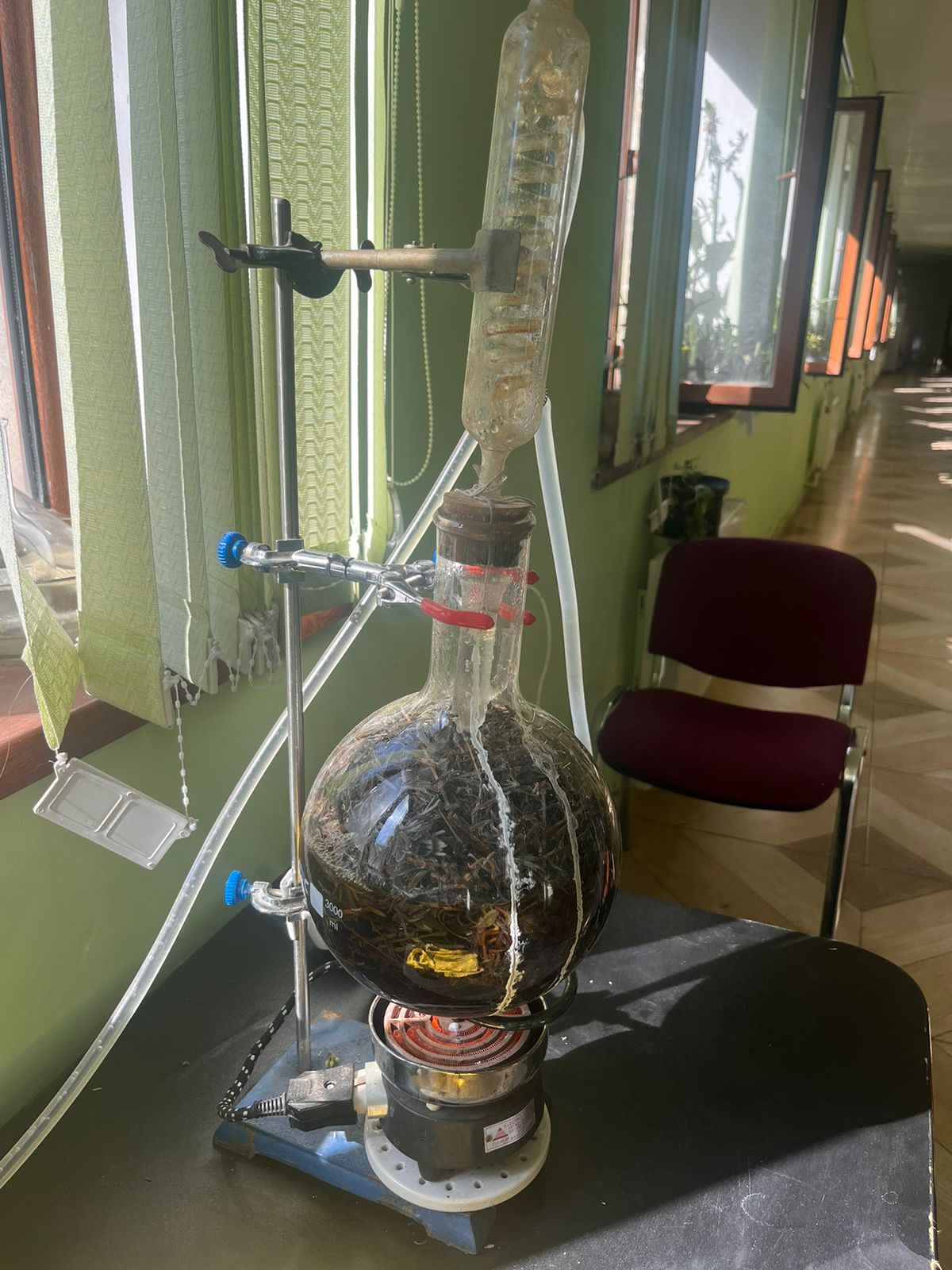Lavandula angustifolia Mill. The chemical composition of the essential oil of the species is analyzed
Lavandula angustifolia Mill. - true lavender is a perennial herb belonging to the genus Lavandula L. (Lavender) of the family Lamiaceae Martinov (Dalamazkimilar). Its homeland is the French and Spanish coasts of the Mediterranean Sea, it grows on the Black Sea coasts of North Africa, North America, Russia, and the Caucasus. It is naturally distributed in Azerbaijan. Lavender has been cultivated in Europe since the end of the 16th century. The word "lavender" comes from the Latin word "lavare", which means "to wash".
In 1922, during the excavations, the remains of fragrant lavender were found from the mummy of the Egyptian pharaoh Tutankhamun. In ancient times, lavender was used to disinfect the air to prevent microbial and fungal infections, ward off the plague, and as a fragrance in homes and churches. Only in the 16th century, the properties of lavender began to be studied, and its tonic, anti-diabetic, and disinfectant effects were widely recognized.
In many countries of the world, including Spain, Italy and France, there are many representatives of the lavender genus, the most important of which is Lavandula angustifolia Mill. is considered. Lavender is a strong-smelling, evergreen, grayish hairy plant that belongs to the evergreen group of plants and changes its leaves every 2 years. The root system is fringed and woody. The bush is 40-60 cm high, 60-80 cm in diameter and consists of up to 800 branches separated from the main stem. Each branch ends with an annual, four-lobed flower bearer. 6-8 years after its formation, its branches become old and dry, and instead of them, a new stem begins to develop from a dormant shoot in the root throat. Branches are very branched, ascending, numerous young trees; flower spikes are four-parted, long, upper jointed. The leaves are narrow, opposite, sessile, veined, oblong-linear, with twisted edges, 2-6 cm long, green or gray-green hairy. Lavandula angustifolia Mill. It blooms for 20-35 days starting from mid-June.
The flowers are collected in pseudofloral pods that form spike-shaped flower clusters. The calyx leaf is non-shedding, tubular, five-toothed. Corolla bilobed, about 1 cm long, mostly bluish-purple, pubescent and shedding. There are 4 males and 1 female. It has a four-lobed superior ovary. The stems are short and branchless. It is cross-pollinated, but self-pollination is also possible. The fruit is a brown, oval-shaped small nut with a smooth shiny surface inside a thick calyx. The weight of 100 fruits is 1 gram.
Lavender can be grown in a variety of soil types, even in poorly drained and gravelly soils, but sandy and gravelly black soils are considered more favorable. It is cold-resistant and withstands frost up to -250C. Heavy soils with excess acidity and groundwater close to the surface are unsuitable for lavender. Lavender can also be grown in gravelly soils. It grows poorly in saline, heavy clay and poorly aerated soils. Lavender is a light-loving plant. In shady conditions, its branches grow too long, its flowers become smaller, and its oiliness decreases. If proper agrotechnical care is provided, the lavender plant can produce for 20-25 years.
It is possible to reproduce the plant both vegetatively and generatively. In production, in September-October, it can be propagated vegetatively - by chiling, dividing the bush, and by burying. Chilings are 8-10 cm long and are cut from one-year semi-wooden branches on 4-5-year-old tree bushes.
The natural oil obtained from fresh lavender flowers has the ability to restore balance to the entire body system. It has sedative and antidepressant, bactericidal, fungicidal and insecticidal properties, has an analgesic effect in rheumatism, otitis and migraine, reduces insomnia and nervous tension. Accelerates the healing of wounds, skin irritations, burns, including sunburns. It kills bacteria that cause skin infections, smoothes the skin, reduces wrinkles and reduces sebum secretion. As a spice plant, lavender is used in Italian, French and Spanish cuisine, especially in the preparation of meat dishes. Lavender alcohol is also included in some liniments and ointments as an antiseptic agent. Essential oils obtained by distillation are used in medicine, cosmetology and perfumery. Since it is a decorative species, it is used as an ornamental plant in greening parks and gardens. It is of great importance in preventing soil erosion. Lavender can keep its fragrance for 3 thousand years.
The main objective of the research work carried out in the "Plants of Agricultural Importance" laboratory is Lavandula angustifolia Mill. the study of the morphological, physiological, vegetative, generative reproduction characteristics of the species, the investigation of development prospects in the garden area, the study of the oiliness and phytochemical composition of the essential oil obtained from this plant.
All parts of the plant selected as the research object contain 0.8-3% essential oil, up to 12% tannins, resins, ursolic acid, coumarin, guerniarin in its flowers. The main component of the essential oil is linaloacetate (30-56%) and linalool (10-12%).
In order to obtain essential oil, lavender was collected from the territory of the garden by the employees of the "laboratory of agriculturally important plants". The leaf of the plant (300 g) was cleaned and placed in a flask. Distilled water (1.5l) was used as a solvent. It was boiled for 4 hours and as a result 0.5 ml of essential oil was obtained.
According to the research work, the chemical composition of the essential oil obtained from real lavender was analyzed in KRISTAL-2000M gas chromatography apparatus. The analysis was completed in 22,067 minutes. During the component composition analysis, 33 peaks were identified, but 17 peaks were identified. The highest concentration was found in 1,8-Cineol (Eucalyptol) substance at 10,475 minutes of analysis (height 1281,687 mm, area 37,109%), and the lowest concentration was found in Geraniol (height 6,554 mm, area 0.165%) at 16,935 minutes of analysis and Myrtenilacetate (height 6,554 mm, area 0.165%) at 17,145 minutes 7.169 mm, area 0.163%) was observed in substances.




